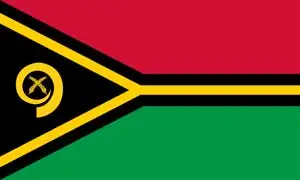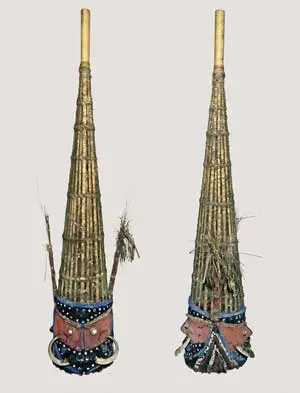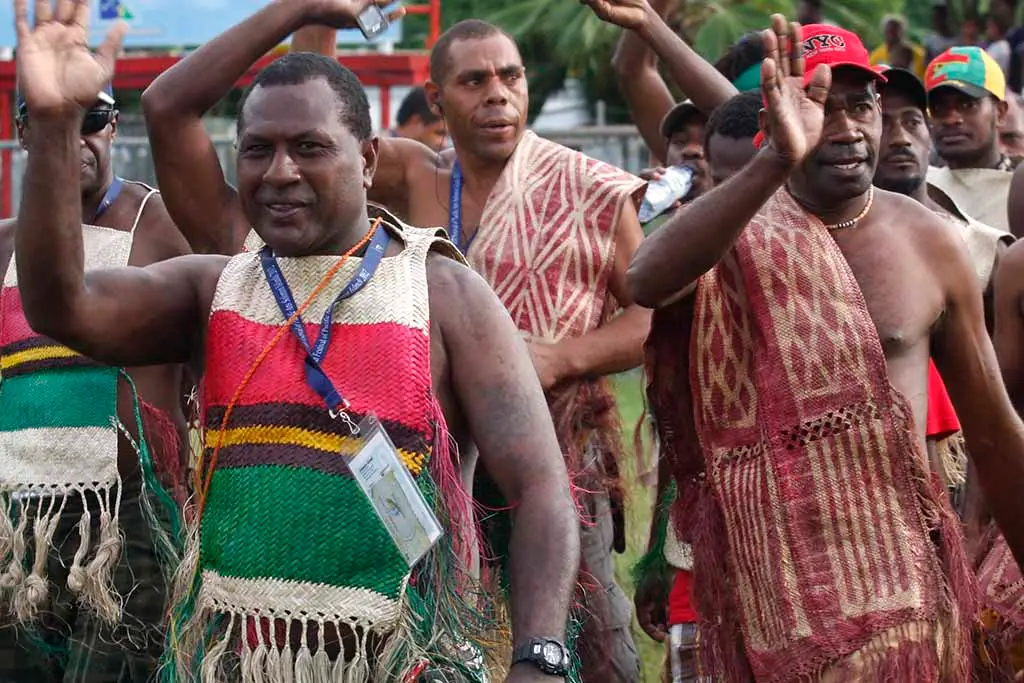POP Cultures: Vanuatu
Table of Contents
Share This
Map
Flag

Quick facts
Official Name: Republic of Vanuatu
Indigenous Peoples: Ni-Vanuatu (collectively)
Official Languages: Bislama, French and English
Political Status: Independent
Capital: Port Vila
Population: 272,264 (2015 est.)
Greeting: Halo and Bonjour
Audio bite from Learn French – French greetings
History and geography

The Republic of Vanuatu is a south Pacific island nation comprised of some 80 islands that span over 1,300 kilometers (808 mi). About 65 of these islands are inhabited. The islands have a tropical climate with occasional cyclones or typhoons from January to April. There are also active volcanoes, including several underwater volcanoes.
Vanuatu is located about 1,754 km (1,090 mi) east of northern Australia, and northeast of New Caledonia. Formerly known as New Hebrides under British rule, the islands were first inhabited 4,000 years ago by Melanesian, Austronesian-speaking peoples. Beginning in the 17th century, though, European navigators traveled to and claimed the islands under various colonial administrations.
Portuguese navigator Fernandes de Queiros in 1606 claimed the islands for Spain as part of the Spanish East Indies, renaming them Australia del Espirítu Santo. The islands, however, were not settled very long by the Spanish. Louis Antonie de Bougainville arrived in 1768, then Captain James Cook came in 1774, and renamed the islands New Hebrides.
In 1825, British trader Peter Dillon discovered sandalwood and thus began a rush of immigrants to the area. With the development of the sandalwood trade, a need for laborers arose. The practice that came to be known as “blackbirding” became a way to obtain long-term indentured servants. More than one-half of the adult male population of several of the islands worked abroad through this process, many against their will.
By the 19th century Christianity was introduced to the islands by Catholic and Protestant missionaries from Europe and North America. Foreign settlers primarily used the land to set up cotton plantations, then later switching to coffee, cocoa, bananas and coconuts. British subjects from Australia made up the majority of settlers, but the French began to increase in number in the 1880s with the establishment of the Caledonian Company of the New Hebrides. The French outnumbered the British by the early 20th century. The British and French who settled in the New Hebrides eventually agreed in 1906 to govern the islands under an Anglo-French condominium; however, the Melanesian population was effectively prevented from having either French or British citizenship or gaining political power.
The islanders gained more exposure to the outside world during the fighting of World War II and the arrival of American troops. Although the islands did not experience the atrocities of war as their neighbors in New Guinea and the Solomon Islands had endured, the New Hebrides was witness to the military might of the United States. The Americans brought their wealth and ideas of nationalism and democracy, and although they left almost as immediately as they had arrived in the islands, their presence and ideas sparked a new kind of religious belief system known collectively as “cargo cults.” Among the islanders, the most popular cargo cult believed in a messianic figure known as John Frum. Christianity, however, remains the most dominant religion among the Ni-Vanuatu today.
The islands finally gained independence in 1980 and became the Republic of Vanuatu. Since the 1990s, Vanuatu has experienced periods of political instability, including an attempted coup in 1996.
Today, more than 96% of the population are Ni-Vanuatu, and more than 100 local languages are spoken. The government is a parliamentary republic, with a president, prime minister and Council of Ministers, and a 52-seat unicameral Parliament. There is also a National Council of Chiefs that advises on matters of culture and language. The official languages are English, French and Bislama, a creole language that combines pidgin English and French.
Most people sustain themselves through small scale agriculture and fishing. Tourism is another industry that adds to the local economy.
Arts and culture

There are strong local and regional cultural variations among the Ni-Vanuatu, and various levels of foreign influence. With over 100 different languages and numerous other dialects, the diversity of the people of Vanuatu is the result of thousands of years of sporadic migration by different Pacific countries. The pig is probably the most significant aspect of life in the islands as a source of food, but also as a cultural symbol of wealth, power and society.
There are four main culture areas among the islands of Vanuatu. The northern areas have societies that rely on displays of wealth and generosity to attain political and social power. The southern areas instead bestow chiefly titles on certain men. In many Vanuatu cultures, women have a very low status.
Frequent rituals and elaborate ceremonies mark every aspect of the lives of the people of Vanuatu. Because the people of Vanuatu have no written language, songs, poems, storytelling and dances are significant in cultural expression. Body art, including tattoos, and elaborate, masks, hats and carvings, are all part of the ritual life of the Ni-Vanuatu.
Traditional musical instruments include drums of various shapes, sizes and sounds, slit gongs, and rattles. Popular stringed instruments introduced among the people through foreign contact include guitars and ukuleles. Urban music forms, including zouk and reggaeton are popular in Vanuatu urban centers.
Kava, a traditional drink derived from the pepper tree family, is also a significant part of Vanuatu culture and is consumed in a variety of ways and occasions.
Sculptures created for ritual events include tall figures and life-sized effigies of chiefly men, as well as faces and masks carved from wood, clay and stone. Vanuatu also has a number of traditional crafts, including shell necklaces, ankle rattles, and headdresses of paint, feathers and pig tusks, miniature canoes, weapons such as bows, arrows, clubs and spears, and ceremonial platters, bowls and dishes, often shaped into birds or fish. Finely woven baskets and mats of pandanus and burao (wild hibiscus) are also part of Vanuatu culture.
